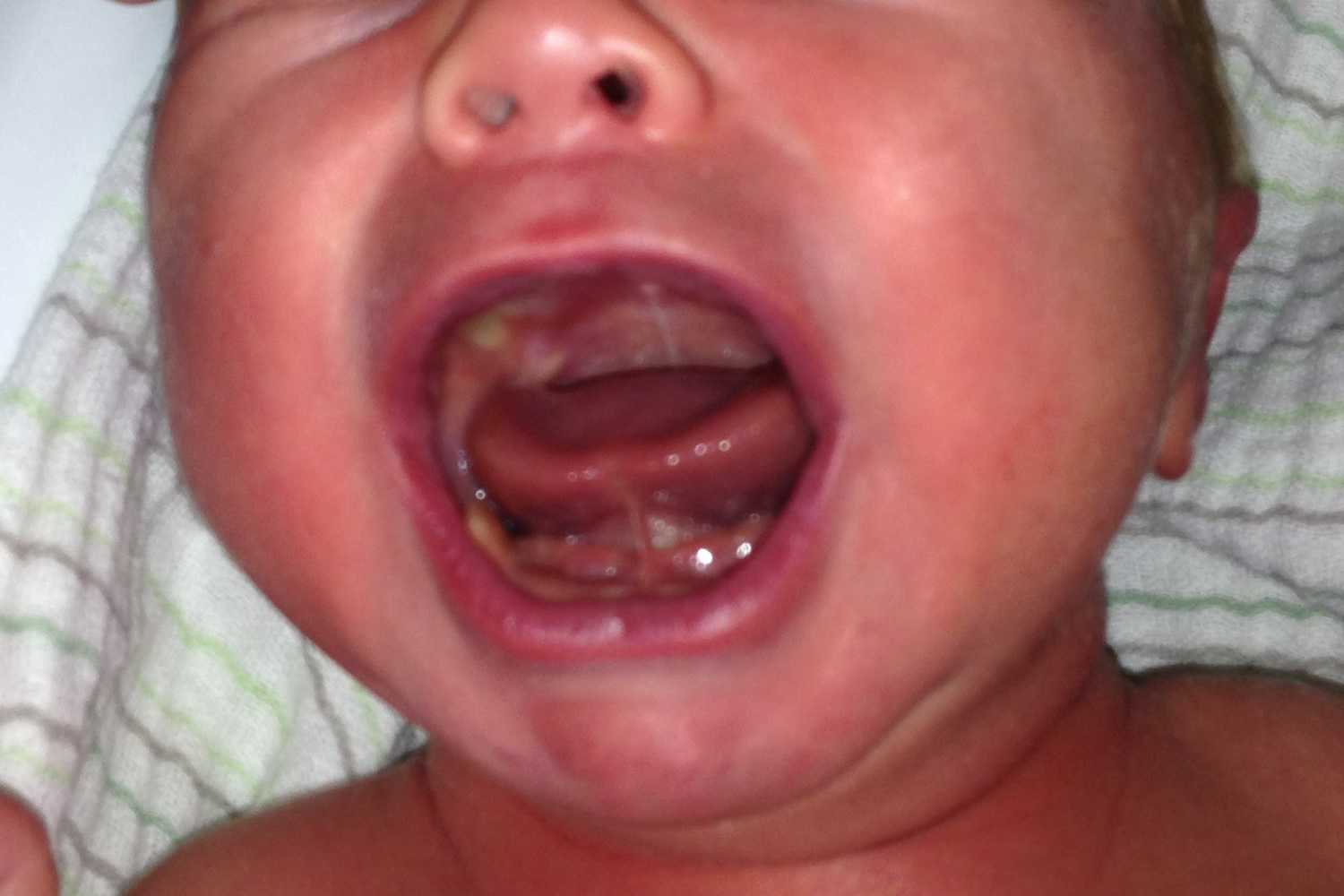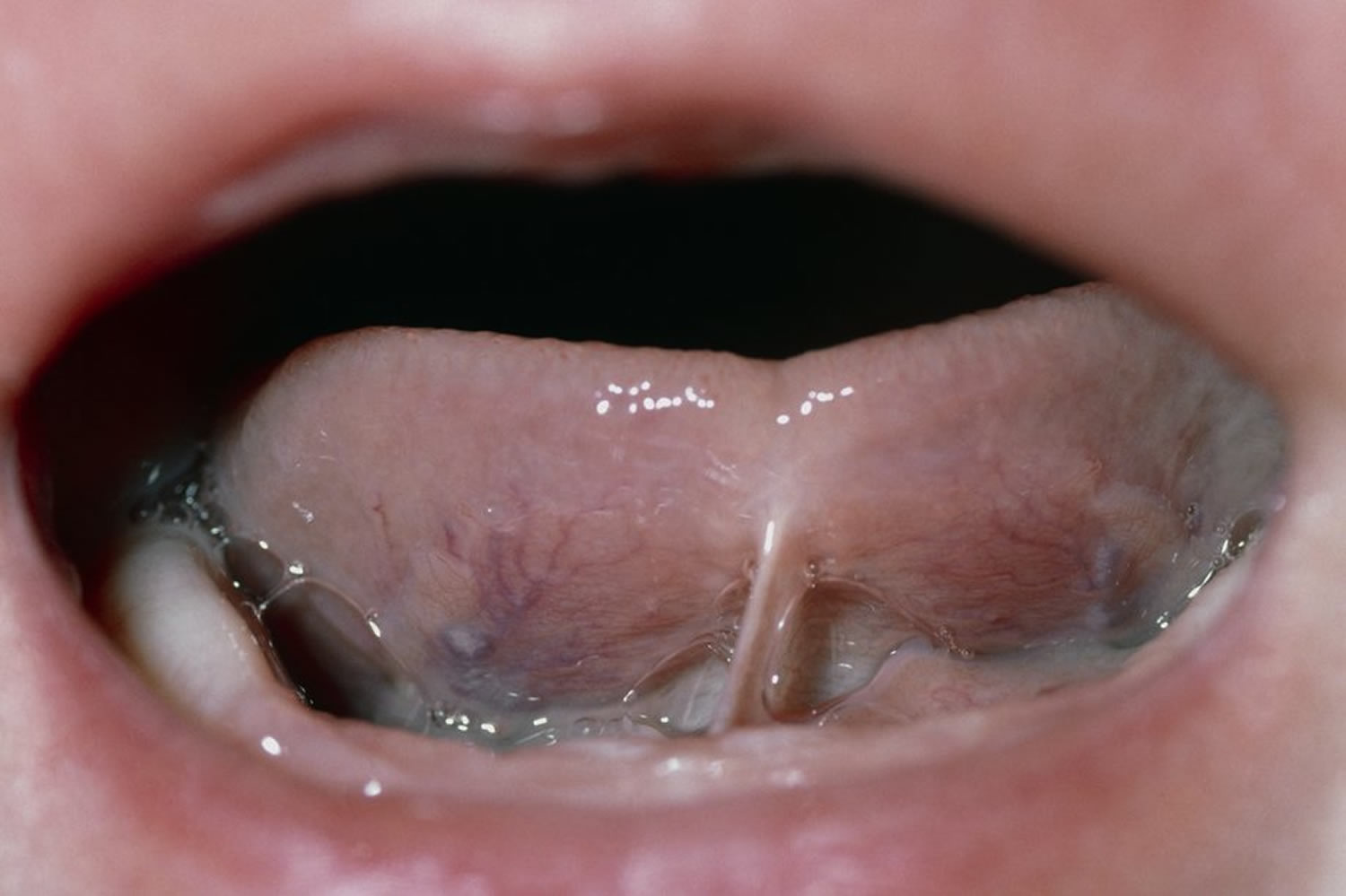Contents
What is tongue tie
Tongue-tie (ankyloglossia) is where the strip of thin membrane under the baby’s tongue (called the lingual frenulum) connecting the baby’s tongue to the floor of their mouth is shorter than usual and restricts the movement of the tongue. Before you are born, a strong cord of tissue that guides development of mouth structures is positioned in the center of the mouth. It is called a frenulum. After birth, the lingual frenulum continues to guide the position of incoming teeth. As you grow, it recedes and thins. This frenulum is visible and easily felt if you look in the mirror under your tongue. In some children, the frenulum is especially tight or fails to recede and may cause tongue mobility problems.
Tongue-tie is sometimes diagnosed during a baby’s routine newborn check, but it’s not always easy to spot. It may not become apparent until your baby has problems feeding.
The tongue is one of the most important muscles for speech and swallowing. For this reason having tongue-tie can lead to eating or speech problems, which may be serious in some individuals.
Tongue-tie affects around 4-11% of newborn babies. Tongue-tie (ankyloglossia) more common in boys than girls, and sometimes runs in families.
Some babies who have tongue-tie don’t seem to be bothered by it. In others, tongue tie can restrict the tongue’s movement, making it harder to breastfeed.
Some babies with tongue-tie are able to attach to the breast and suck well. However, many have breastfeeding problems, such as nipple damage, poor milk transfer and low weight gains in the baby, and possibly blocked ducts or mastitis due to ineffective milk removal.
See your doctor if you’re concerned about your baby’s feeding and think he/she may have tongue-tie.
Figure 1. Infant tongue tie (ankyloglossia)
When Is Tongue-tie a Problem That Needs Treatment?
In Infants
Feeding
A new baby with a too tight frenulum can have trouble sucking and may have poor weight gain. Such feeding problems should be discussed with your childs pediatrician who may refer you to a head and neck surgeon (ear, nose, and throat specialist) for additional treatment.
NOTE: Nursing mothers who experience significant pain while nursing or whose baby has trouble latching on should have their child evaluated for tongue tie. Although it is often overlooked, tongue tie can be an underlying cause of feeding problems that not only affect a childs weight gain, but lead many mothers to abandon breast feeding altogether.
In Toddlers and Older Children
Speech
While the tongue is remarkably able to compensate and many children have no speech impediments due to tongue-tie, others may. Around the age of three, speech problems, especially articulation of the sounds – l, r, t, d, n, th, sh, and z may be noticeable. Evaluation may be needed if more than half of a three year old childs speech is not understood outside of the family circle. Although, there is no obvious way to tell in infancy which children with ankyloglossia will have speech difficulties later, the following associated characteristics are common:
- V-shaped notch at the tip of the tongue
- Inability to stick out the tongue past the upper gums
- Inability to touch the roof of the mouth
- Difficulty moving the tongue from side to side
As a simple test, caregivers or parents might ask themselves if the child can lick an ice cream cone or lollipop without much difficulty. If the answer is no, they cannot, then it may be time to consult a physician.
For older children with tongue-tie, appearance can be affected by persistent dental problems such as a gap between the bottom two front teeth. Your childs physician can guide you in the diagnosis and treatment of tongue-tie. If he/she recommends surgery, a head and neck surgeon (ear, nose, and throat specialist), can perform a surgical procedure called a frenulectomy.
Newborn tongue tie and breastfeeding problems
To breastfeed successfully, the baby needs to latch on to both the breast tissue and nipple, and their tongue needs to cover the lower gum so the nipple is protected from damage.
A baby needs to be able to have good tongue function to be able to remove milk from the breast well. If the tongue is anchored to the floor of the mouth due to a tongue -tie, the baby cannot do this as well. The baby may not be able to take in a full mouthful of breast tissue. This can result in ‘nipple-feeding’ because the nipple is not drawn far enough back in the baby’s mouth and constantly rubs against the baby’s hard palate as he feeds. As a result, the mother is likely to suffer nipple trauma.
Babies with tongue-tie aren’t able to open their mouths wide enough to latch on to the breast properly.
If you’re breastfeeding your baby and he/she has tongue-tie he/she may:
- have difficulty attaching to the breast or staying attached for a full feed
- feed for a long time, have a short break, then feed again
- be unsettled and seem to be hungry all the time
- not gain weight as quickly as he/she should
- make a “clicking” sound as he/she feed – this can also be a sign you need support with the positioning and attachment of your baby at the breast
Tongue-tie can also sometimes cause problems for a breastfeeding mother. Problems can include:
- sore or cracked nipples
- low milk supply
- mastitis (inflammation of the breast), which may keep recurring
Most breastfeeding problems, however, aren’t caused by tongue-tie and can be overcome with the right support.
If you’re finding breastfeeding difficult, ask your midwife, your family doctor or a breastfeeding specialist for help.
Tongue tie symptoms
Signs that may indicate your baby has tongue-tie include:
- difficulty lifting their tongue up or moving it from side to side
- difficulty sticking their tongue out
- their tongue looks notched or heart-shaped when they stick it out.
Tongue tie treatment
Treatment isn’t necessary if your baby has tongue-tie but can feed without any problems. If their feeding is affected, treatment involves a simple procedure called tongue-tie division.
Tongue tie surgery
Tongue-tie division involves cutting the short, tight piece of skin connecting the underside of the tongue to the floor of the mouth (the lingual frenulum).
It’s a quick, simple and almost painless procedure that usually resolves feeding problems straight away.
Tongue tie procedure
Tongue-tie division is carried out by a specially trained doctors, nurses or midwives.
In very young babies (those who are only a few months old), the procedure is carried out without anesthetic (painkilling medication), or with a local anesthetic that numbs the tongue.
The procedure doesn’t seem to hurt babies. This is because there are very few nerve endings in the area around the floor of the mouth. Some babies sleep through the procedure, while others cry for a few seconds.
A general anesthetic is usually needed for older babies with teeth, which means they’ll be unconscious throughout the procedure.
The baby’s head is held securely while sharp, sterile scissors are used to snip the tongue-tie. Some practitioners use a laser instead of scissors.
It only takes a few seconds, and you can start feeding your baby immediately afterwards.
There should be little blood loss, although some bleeding is likely. A white patch may form under the tongue, which takes 24 to 48 hours to heal, but doesn’t bother the baby.
Research suggests most babies who have treatment for tongue-tie find breastfeeding easier afterwards.
Older children and adults
Untreated tongue-tie may not cause any problems as a child gets older, and any tightness may resolve naturally as the mouth develops.
However, tongue-tie can sometimes cause problems such as speech difficulties and difficulty eating certain foods.
Speak to your doctor if you think you or your child is having problems caused by tongue-tie.
Tongue-tie surgery can be carried out in older children and adults, although it’s usually done under general anesthetic and may involve using stitches.






